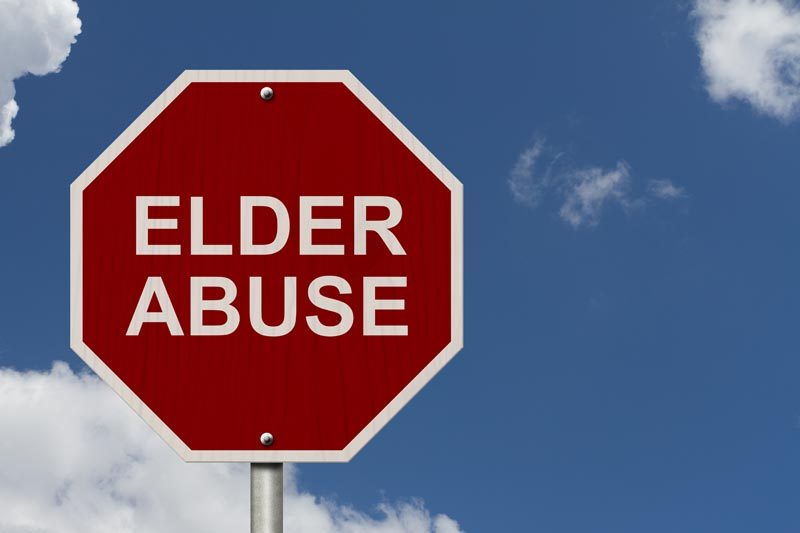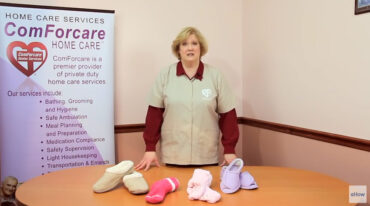Elder Justice Roadmap Outlines Critical Path to Combating Elder Abuse
WASHINGTON –Today, leaders in the fight against elder abuse announced a framework for tackling the highest priority challenges to elder abuse prevention and prosecution, and called on all Americans to take a stand against the serious societal problem of elder abuse, neglect and financial exploitation.
Research suggests that one in 10 Americans over the age of 60 has experienced elder abuse or neglect, and that people with dementia are at higher risk for abuse.
Supported by the Department of Justice (DOJ) and the Department of Health and Human Services (HHS), the Elder Justice Roadmap was developed by harnessing the expertise and gathering the input of hundreds of public and private stakeholders from across the country. The goal of these expert summits was to identify the most critical priorities and concrete opportunities for greater public and private investment and engagement in elder abuse issues. The Elder Justice Roadmap, which is being published today, reflects the knowledge and perspectives of these experts in the field and will be considered by the Elder Justice Coordinating Council and others in developing their own strategic plans to prevent and combat elder abuse.
“The Roadmap Project is an important milestone for elder justice,” said Associate Attorney General Tony West. “Elder abuse is a problem that has gone on too long, but the Roadmap Report released today can change this trajectory by offering comprehensive and concrete action items for all of the stakeholders dedicated to combating the multi-faceted dimensions of elder abuse and financial exploitation. While we have taken some important steps in the right direction, we must do more to prevent elder abuse from occurring in the first place and face it head on when it occurs.”
“From now until 2030, every day, about 10,000 baby boomers will celebrate their 65th birthday,” said Kathy Greenlee, HHS’ assistant secretary for aging and administrator of the Administration for Community Living. “And the fastest-growing population is people 85 years old, or older. Stemming the tide of abuse will require individuals, neighbors, communities, and public and private entities to take a hard look at how each of us encounters elder abuse—and commit to combat it.”
To support the mission of elder abuse prevention and prosecution, DOJ has developed an interactive, online curriculum to teach legal aid and other civil attorneys to identify and respond to elder abuse. The first three modules of the training cover what lawyers should know about elder abuse; practical and ethical strategies to use when facing challenges in this area; and a primer on domestic violence and sexual assault. This training will expand to include six one-hour modules covering issues relevant to attorneys who may encounter elder abuse victims in the course of their practice.
HHS is supporting the mission by developing a voluntary national adult protective services (APS) data system. Collecting national data on adult mistreatment will help to identify and address many gaps about the number and characteristics of adults who are the victims of maltreatment and the nature of services that are provided by APS agencies to protect these vulnerable adults. In addition, the data will better inform the development of improved, more targeted policy and programmatic interventions.
In addition to informing federal elder justice efforts, the roadmap has already inspired private stakeholders to take action. For example, as a result of the roadmap, the Archstone Foundation has funded a project at the Keck School of Medicine at the University of Southern California to develop a national training initiative, while other funders, such as the Weinberg Foundation, have begun to consider inquiries and projects outlined in the roadmap. Likewise, the Brookdale Center for Healthy Aging at Hunter College, The Harry and Jeannette Weinberg Center for Elder Abuse Prevention at the Hebrew Home at Riverdale and the New York City Elder Abuse Center will be co-sponsoring a symposium in September 2014 focusing on innovations and challenges related to elder abuse multidisciplinary teams, a priority area identified in the roadmap.
“While federal and state governments certainly have critical roles to play, the battle against elder abuse can only be won with grassroots action at the community and individual level,” said Greenlee. “Turning the tide against elder abuse requires much greater public commitment, so every American will recognize elder abuse when they see it and know what to do if they encounter it.”
Two steps local communities, families and individuals can take are:
• Learn the signs of elder abuse. The National Center on Elder Abuse, a program of the Administration on Aging at ACL, has developed a helpful Red Flags of Abuse Factsheet (PDF) that lists the signs of and risk factors for abuse and neglect.
• Report suspected abuse when you see it. Contact your local adult protective services agency. Phone numbers for state or local offices can be found at the National Center for Elder Abuse website, or call 1-800-677-1116.
“We must take a stand to ensure that older Americans are safe from harm and neglect,” said Associate Attorney General West. “For their contributions to our nation, to our society, and to our lives, we owe them nothing less.”
The Elder Justice Roadmap and accompanying materials are at: http://ncea.acl.gov/Library/Gov_Report/index.aspx.
Free online training for attorneys is at: https://www.ovcttac.gov/views/dspLegalAssistance.cfm?tab=1#onlinetraining.
Related items
Walk-In Shower Designs
Innovative walk-in shower designs empower folks with limited mobility to retain the freedo
Retrofitting Your Home for Comfortably Aging in Place
Creating a safe and comfortable home environment is essential for any senior who wants to






